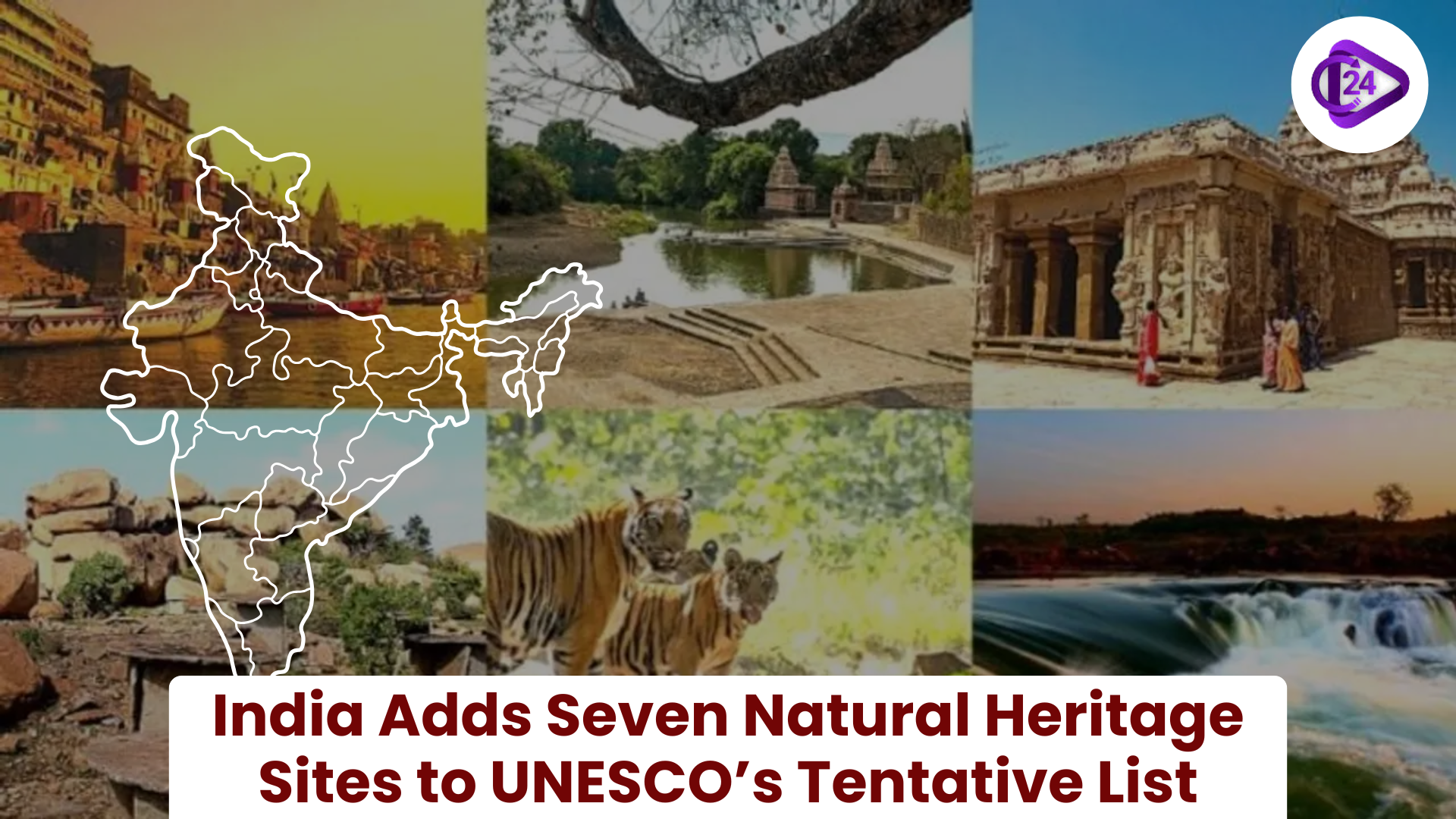
India has gone a long way as far as protecting its natural heritage is concerned, and seven super sites have been included under the UNESCO Tentative List of World Heritage Sites. This leaves all the sites that are under consideration to be 69, which comprises 49 cultural sites, 17 natural sites and 3 mixed heritage sites. These additions demonstrate Indian concern for preserving natural resources and Indian heritage. The new sites that have been added are located in different states and feature different geological and natural marvels such as the Deccan Traps of Maharashtra or the Meghalayan Age Caves of Meghalaya.
Key Points in Detail
Tentative List of World Heritage Sites, UNESCO.
-
The current Tentative List has 69 sites in India 49 cultural, 17 natural, and 3 mixed.
-
The nomination process of any site to have its name listed on the World Heritage List is first, inclusion in the Tentative List.
Details of Newly Added Sites
-
Deccan Traps at Panchgani and Mahabaleshwar, Maharashtra: The well-preserved lava flows are located in the Koyna Wildlife Sanctuary which is a UNESCO world heritage site.
-
Geological Heritage of St. Marys Island Cluster, Karnataka: The place is famed with unusual columnar basaltic rocks; these formations are estimated to be 85 million years old.
-
Meghalayan Age Caves, Meghalaya: Mawmluh Cave is one of the complex of caves which is considered a global standard point of the Meghalayan Age.
-
Naga Hill Ophiolite, Nagaland: Provides some insight into tectonic processes as its crust is of the oceanic type.
-
Erra Matti Dibbalu (Red Sand Hills), Andhra Pradesh: Red sand hills that show the earth's climate history.
-
Natural Heritage of Tirumala Hills, Andhra Pradesh: Geological importance and Silathoranam (Natural Arch).
-
Varkala Cliffs, Kerala: It comprises some erosional landforms and natural springs along the Kerala coastline.
India Global Heritage Strategic Pledge.
-
These additions make India more influential in conservation efforts globally.
-
The compilation and submissions of the nominations have been done through the Archaeological Survey of India (ASI).
International Recognition
-
In 2024, India hosted the 46th session of the world heritage committee demonstrating Indian commitment to heritage conservation.
Conclusion
It is appropriate to note that the inclusion of seven new natural heritage sites in UNESCO Tentative List by India is a manifestation of its continued effort to conserve its rich natural and cultural heritage. This is a project with the assistance of the ASI to make sure that these magnificent places will one day be accorded international recognition due to their value in science, culture and ecology.



 PM Modi to Inaugurate India’s First Digital Tribal Freedom Fighters Museum in Naya Raipur
PM Modi to Inaugurate India’s First Digital Tribal Freedom Fighters Museum in Naya Raipur President Appoints Justice Surya Kant as the 53rd Chief Justice of India
President Appoints Justice Surya Kant as the 53rd Chief Justice of India 150th Birth Anniversary of Sardar Vallabhbhai Patel: India Celebrates National Unity Day 2025
150th Birth Anniversary of Sardar Vallabhbhai Patel: India Celebrates National Unity Day 2025 Ministry of Coal Launches Koyla Shakti Smart Analytics Dashboard
Ministry of Coal Launches Koyla Shakti Smart Analytics Dashboard Droupadi Murmu Becomes First Indian President to Fly in Rafale
Droupadi Murmu Becomes First Indian President to Fly in Rafale Rajasthan Bans Employment of Children Below 14 in Shops and Commercial Establishments
Rajasthan Bans Employment of Children Below 14 in Shops and Commercial Establishments India's First Glass Suspension Bridge, Bajrang Setu, Will Redefine Rishikesh Tourism by 2025
India's First Glass Suspension Bridge, Bajrang Setu, Will Redefine Rishikesh Tourism by 2025 NITI Aayog’s ‘We Rise’ Empowers Women Entrepreneurs
NITI Aayog’s ‘We Rise’ Empowers Women Entrepreneurs Harsh Sanghavi Appointed Gujarat Deputy Chief Minister in Major Cabinet Reshuffle
Harsh Sanghavi Appointed Gujarat Deputy Chief Minister in Major Cabinet Reshuffle India Ranks 102nd in Global Hunger Index 2025: Hunger Remains a Serious Challenge
India Ranks 102nd in Global Hunger Index 2025: Hunger Remains a Serious Challenge






